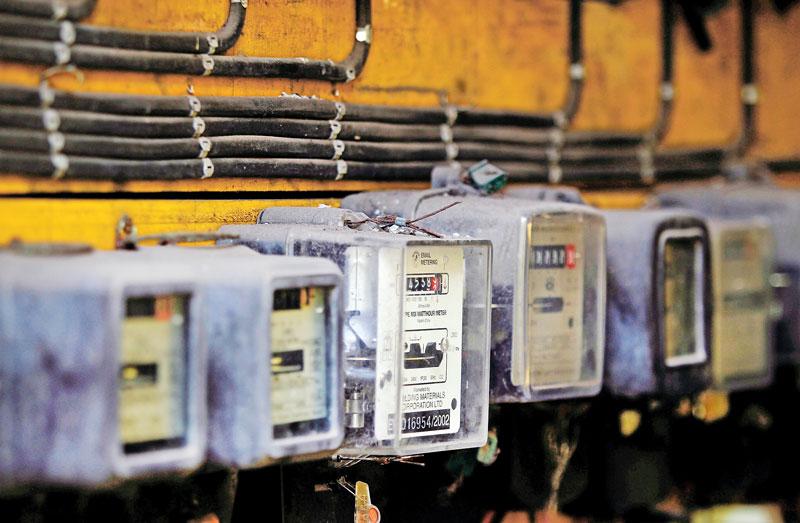Reply To:
Name - Reply Comment

Electricity meters are seen on a board at a housing complex in Colombo (REUTERS)
REUTERS (Colombo): Sri Lanka’s State-run power firm has imposed daily power cuts for the first time in more than two years as a drought has slashed hydro-power output, highlighting the government’s failure to build new power plants, officials said on Monday.
The drought has cut the hydro-power generation in half to 15 percent of the nation’s total electricity production as the Ceylon Electricity Board (CEB) seeks to save water for household and irrigation requirements, the firm said.
That has resulted in a four-hour rolling power cut on weekdays, between the hours of 8:30 a.m. and 10 p.m., that began without notice on Friday and was then announced on a scheduled basis for Monday. The four-hour daily cuts hit different places at
different times.
If the power cuts are extended for any length of time they could hurt Sri Lanka’s already weak economy. Its GDP growth slowed to just 3.2 percent in 2018, the lowest in 17 years.
Sri Lanka’s peak demand is 2,400 MW and the country is generating 1,950 MW at the moment, CEB officials said.
“We have to impose power cuts to bridge the shortage,” Saumya Kumarawadu, head of the CEB Engineers Union, told Reuters. “The main reason for the power cut is the government’s failure in implementing the planned power plants,” he added.
Officials from the Power and Energy Ministry were not immediately available for comment on the power cuts.
Health Ministry officials said key hospitals in the country had emergency power backup.
In an indication of how severe the situation has become, a Power and Energy Ministry official said the government had on Friday started trying to produce artificial rain with the help of Thailand’s Department of Royal Rainmaking and Agricultural Aviation - so far only a pilot project.
The power cuts come after delays in power plant projects.
In 2016, the government cancelled a 500 MW coal power plant through a joint venture between CEB and India’s National Thermal Power Corporation in the eastern port district of Trincomalee, citing environmental pollution. That coal power plant was originally due to start producing later this year.
A 300 MW liquefied natural gas plant (LNG), which was to be started in January this year, has been held up for more than two years due to a court battle between local firm Lakdhanavi and a joint venture between China’s GCL and a Sri Lankan firm.
Lakdhanavi had filed a legal case against the Power and Energy Ministry in 2017 for awarding the LNG tender to the joint venture for US$307 million against its bid of US$175 million.
Sri Lanka has total electricity generating capacity of 40 GWH, as it mainly relies on thermal power, including a Chinese built coal power plant, which account for 45 percent of its supply.